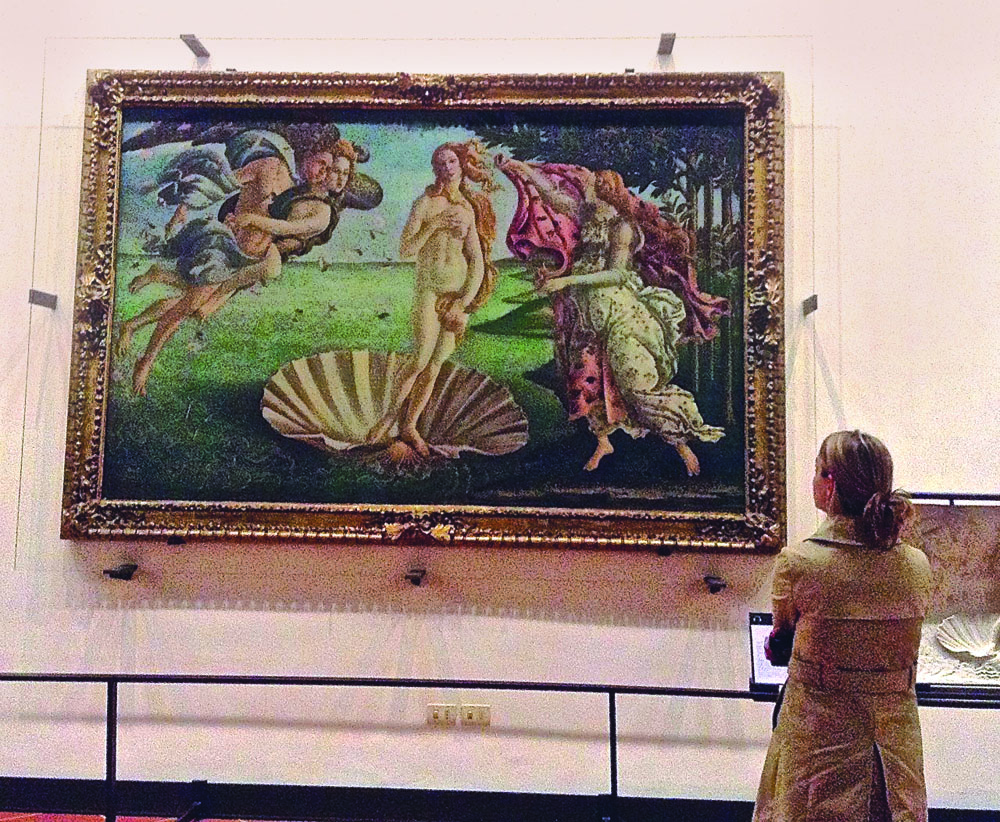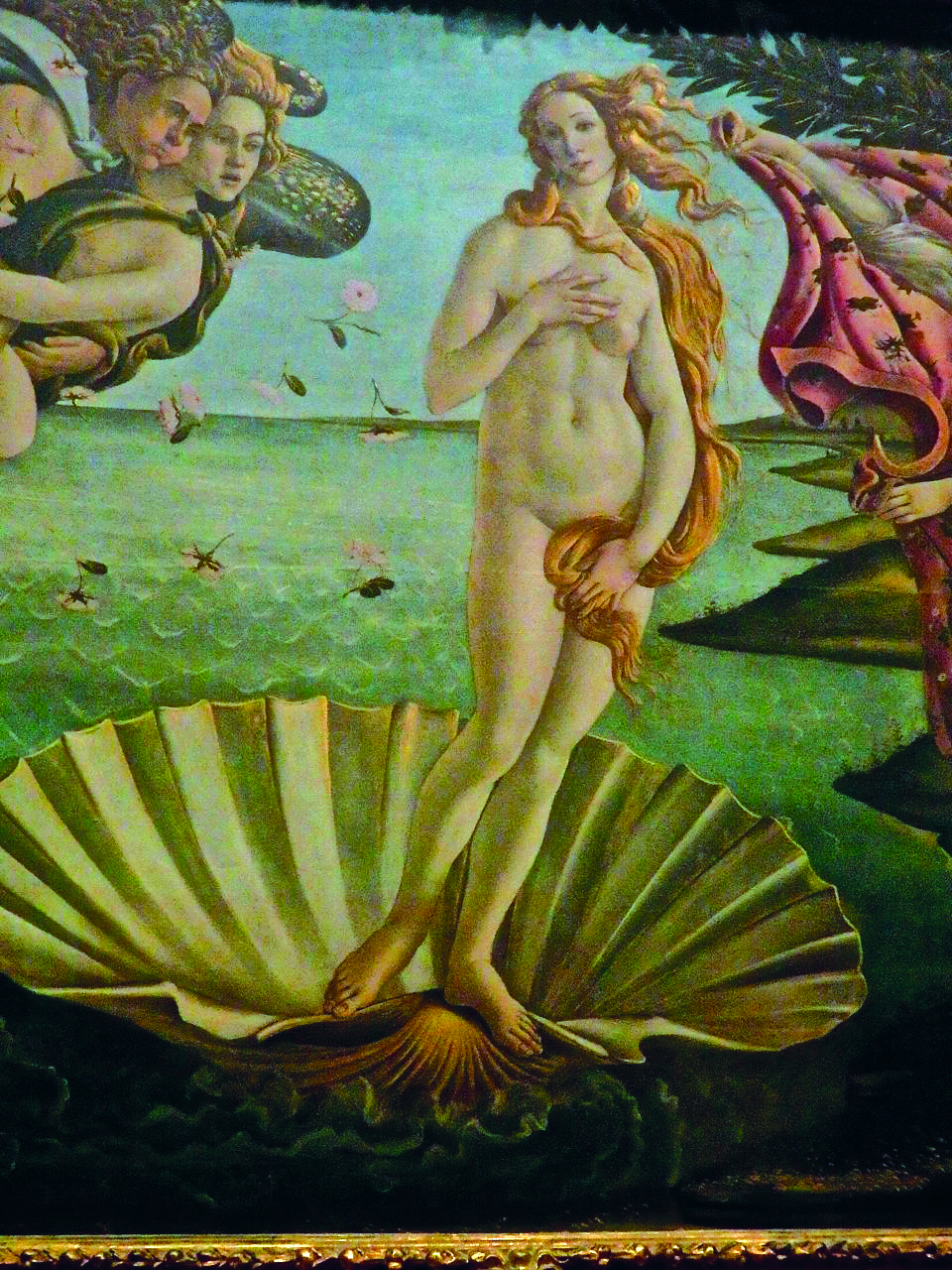Botticelli’s Birth of Venus is the beautiful depiction of an idea – the image of Renaissance beauty, where the ancient world merged with the Christian immortal soul…

Why is Botticelli’s Birth of Venus one of the most famous paintings from the Renaissance? It depicts the birth of the goddess of love and beauty as a fully grown, naked woman coming out of the Aegean Sea to shore on a clam shell. But this does not explain the overwhelming international fame it has achieved. The Venus painting is famous because it sums up an entire period; it is a symbol of one of the most fascinating periods in history, the Renaissance. It was created at the height of the philosophical period of 15th century Florence, which has been likened to the Classical Greek period of the 5th century BC.
It was painted by Sandro Botticelli during the years 1482-83 and almost certainly commissioned by Lorenzo the Magnificent of the Medici family, the unofficial ruler of the Florentine Republic. While we don’t have many original documents regarding it (exact dates, motivation for the commission, specific destined location) it is more or less unanimously considered to be emblematic for the era, and representative of the circle fostered by Lorenzo the Magnificent.
Beauty was discussed a lot in this period, especially in the Neo-Platonic circle that buzzed around the Medici home. This is why they wanted a large painting of the personification of beauty, Venus, on the wall: it served as a poster advertising what they were striving to achieve – to be the most beautiful humanly possible. They were interested in spiritual, internal beauty, not physical beauty.
Beauty in this period was a synonym for the soul and, more particularly, man’s God-given capacity to create greatness. Michelangelo is a product of this period and the Medici circle – he lived for a few years with Lorenzo the Magnificent and family. Michelangelo believed that his own beauty was his ability to create sculpture. This explains his ardent, obsessive dedication to working on his sculptural commissions. His beauty was the sculpture that he produced, which also explains why he repeatedly – nearly only ever – sculpted the naked male figure, as this was for him a symbol of the pure soul. Botticelli’s Venus would have been on a wall of a Medici home when Michelangelo lived with them.
In the 1400s man viewed himself and his life on Earth differently to how Medieval man had considered himself and his surroundings. He considered himself a capable individual, similar to the man from Greek and Roman Antiquity; the here and the now was important once more – it was the birth of the way we think today. The problem was how to reconcile this new human possibility of greatness on Earth with Christianity.
The Renaissance man decided that proof of how much time was dedicated to co ntemplation and the nurture of the soul would be shown by how much it was able to dominate the body in producing outward examples of great beauty. This marks a radical shift in how man lived his life because, for the first time since Antiquity, acts of great beauty and goodness didn’t necessarily have to be of a Christian nature.
ntemplation and the nurture of the soul would be shown by how much it was able to dominate the body in producing outward examples of great beauty. This marks a radical shift in how man lived his life because, for the first time since Antiquity, acts of great beauty and goodness didn’t necessarily have to be of a Christian nature.
The beautiful Venus painting by Botticelli is the depiction of an idea: she is the image of Renaissance beauty, where the ancient world merged with the Christian immortal soul. Venus by Botticelli is the new and improved ancient goddess who is now the goddess of inner Christian beauty, of the immortal soul and spiritual love. She is the new, Christian Venus. That’s why Botticelli added gold to the trees and Venus’ hair. Gold, in medieval symbolic painting, was used to denote heaven. He has painted pure beauty in heaven, which is what we will see if we dedicate our time on earth to nurturing our own personal beauty.
Botticelli’s beauty – his God-given talent – was painting, and so each beautiful painting he produced was, like sculpture for Michelangelo, a prayer to God.
